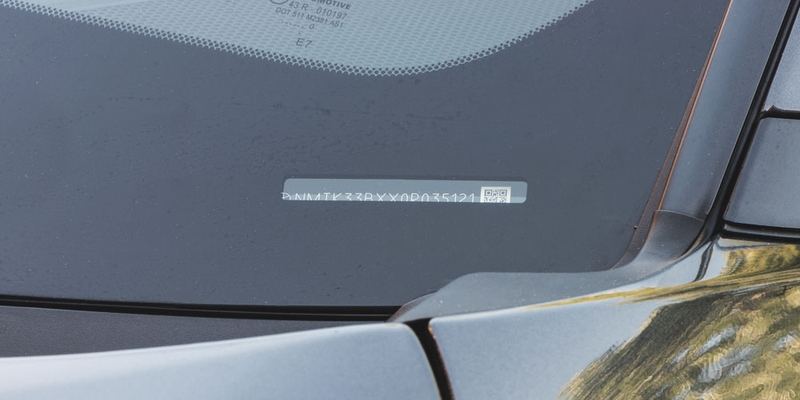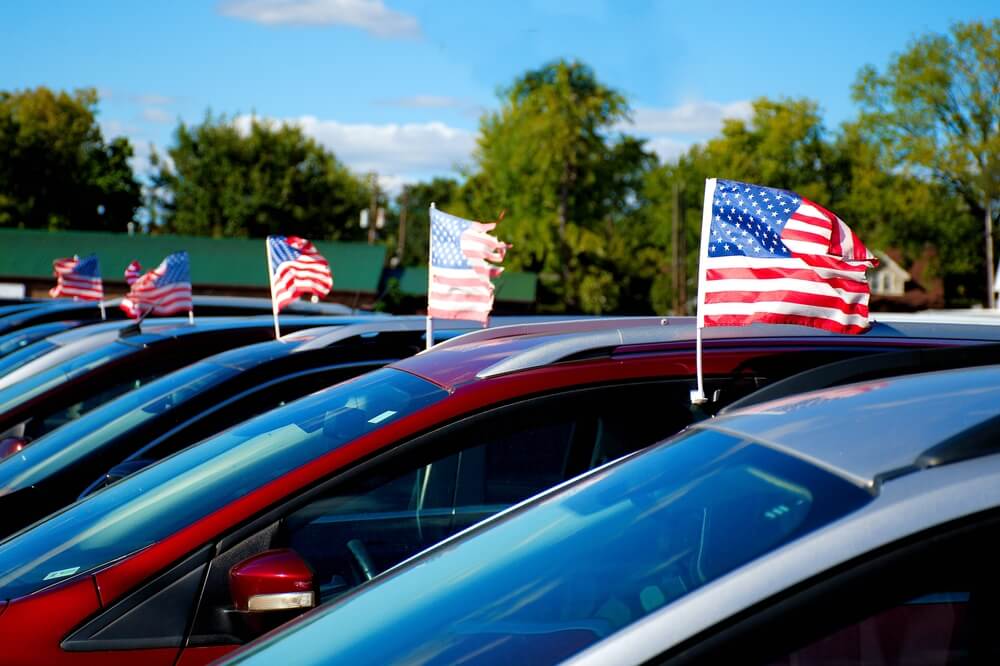
If you are not redirected within 30 seconds, please click here to continue.
Samedi: 10h – 16h HAE

If you are not redirected within 30 seconds, please click here to continue.
If you are not redirected within 30 seconds, please click here to continue.
What Is a Vehicle Identification Number and Why Should You Check a VIN Before Buying a Car?

Table of Contents
- Checking a VIN is important because if you’re buying a used car, you want to ensure it isn’t a stolen vehicle and that it’s roadworthy.
- Most cars have a VIN tag on the driver’s side of the dashboard and the front of the engine block. There may also be one inside the driver’s side door.
- You need your VIN to apply for car insurance for your vehicle. It provides a trove of information about a car, including any outstanding liens, accident history, safety recalls, and sometimes even odometer readings.
In the early days of motoring, one imagines that there was no need for a vehicle identification number (VIN).
That changed with Henry Ford’s mass production of the Model T. The Ford Motor Co. would make 15 million Model Ts from 1908-1927, so keeping track of vehicles by using a serial number on the engine block became necessary.
As assembly line auto manufacturing spread to other companies and countries, carmakers each developed formulae for assigning serial numbers. Finally, in 1954, the U.S. government ordered a standardized format and moved the VIN from the engine to the frame since replacing the engine, which was common in the day, confused matters if it was on the block.
In 1981, the U.S. National Highway Traffic Safety Administration (NHTSA) formalized the standard sequence of digits and numbers assigned to vehicles. This 17-digit format introduced a check number (the ninth digit in the VIN). By reading the letters to numbers and applying a calculation, the check number demonstrated if the VIN was genuine or fake.
That’s important because if you’re buying a used car, you want to ensure it isn’t a stolen vehicle and that it’s roadworthy. Moreover, when you register a vehicle, renew a licence plate, or transfer ownership, the accuracy of the VIN confirms the vehicle’s identity. Finally, from a car insurance standpoint, the VIN allows your insurer to ensure it’s adequately rated and confirms its ownership if a claim has been filed.
Don't waste time calling around for auto insurance
Use Rates.ca to shop around, and compare multiple quotes at the same time.
What does my VIN mean?
The first step to decoding the information your VIN provides is to find the number itself. Fortunately, that’s easier today. Most cars have a VIN tag on the driver’s side of the dashboard and the front of the engine block. There may also be one inside the driver’s side door. Older vehicles will have it on the front end of the frame.
If you want to decode your own VIN, here’s what it’s telling you:
- The first three digits (or letters) are the world manufacturer code or identifier. It identifies the country and automaker of the vehicle (including trailers, motorcycles, and mopeds).
- Positions four through nine make up the vehicle descriptor sector (VDS). These characters describe the platform of the vehicle, body style, model, and engine type. In North America, the ninth number is used to prove the VIN is not fake. Since every manufacturer has a unique system for determining the VDS, there are literally thousands of them to comb through. Good thing there are many online services that will decode your VIN for you.
- Positions 10 through 17 are the vehicle’s identification sector — essentially, the vehicle’s serial number. The 10th digit identifies the model year, and some other information may be included. In North America, the 11th digit denotes the plant where the vehicle was assembled.
If the VIN on a car has fewer than 17 digits, that means it was produced before 1981. The decoding formula above won’t work for that, and the information available on vehicles made before 1981 is limited.
Why is it important to check a VIN?
Your vehicle’s VIN is handy for some purposes, helpful for some, and essential for others:
- You need your VIN to apply for car insurance for your vehicle. It also appears on your vehicle’s registration. You can use it to obtain a vehicle history. Vehicle histories provide a trove of information about a vehicle — outstanding liens, accident history, safety recalls, and sometimes even odometer readings. It can also tell you whether a car has been written off by an insurance company, then rebuilt for sale.
- Provincial governments offer services through VINs. For example, Alberta has its own VIN designation (2TA) to replace lost or obliterated VIN tags. Ontario offers a vehicle abstract service, with a barebones record (no driver’s licence, ownership, collision or odometer information) of certified and uncertified vehicles for a lower cost than most private services.
- VINs help identify stolen vehicles when they’re recovered, and they can keep you from unsuspectingly buying a stolen car. Look for signs of VIN tampering like mismatched rivets, screws in place of rivets, or any attempt to obscure or alter the VIN. Make sure it matches the original registration. If there is a VIN in more than one location, ensure they match. (The U.S. has mandated vehicles that are at high risk for theft have VINs on the engine, the transmission, and 12 other locations on the vehicle).
- You can use a VIN to find car parts for your vehicle by giving the number to a parts dealer. They can use the information to ensure the part you need for your vehicle is the right one for your make and model.
If you find a discrepancy with your car’s VIN, for example, if the VIN on the ownership permit doesn’t match the VIN plate affixed to the dashboard, the Insurance Bureau of Canada (IBC) recommends contacting the vehicle licensing and registration office in your province or territory. Additionally, if the VIN on your insurance pink slip doesn’t match the VIN plate on the dashboard, immediately contact your insurance company or local police to report it. If you are concerned a vehicle may be flood-damaged, use IBC’s VIN Verify Service to check to see if the car was reported as flood-damaged and non-repairable.
Your vehicle’s VIN is its fingerprint — no two are the same. If you’re buying a used vehicle, checking the VIN and getting a history report are precautions you must take to make sure you don’t get a lemon or a stolen vehicle. It can also identify if there are other factors like liens or car insurance claims on that car.
Get money-saving tips in your inbox.
Stay on top of personal finance tips from our money experts!










